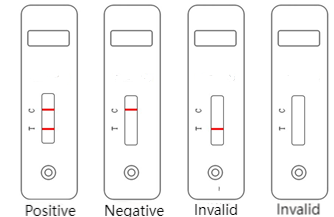

Support Payment Term:

HSBC Hong Kong

paypal

Alibaba Pay

Western Union

USD

EUR

GBP

SGD

HKD

CNH

CAD

MXN

BRL

JPY

THB

MOP

AUD

NZD

PLN

CZK

HUF

RON

CHF

SEK

NOK

DKK

TRY

AED

SAR

ILS

ZAR
$0.00
Discover similar items
Page 1 of 2
Dog Parvovirus Antigen Rapid Test Kit (CPV Ag) (Latex Immunochromatography)
Product Code:
E-CPV-01
Packaging Specification:
20 tests/box
Intended Use:
This product is used for qualitative detection of canine parvovirus antigen in dog feces samples, for the initial screening of canine parvovirus infection.
Canine parvovirus disease, also known as viral enteritis or hemorrhagic enteritis, is a highly contagious and severe infectious disease caused by canine parvovirus in dogs. It is characterized by acute hemorrhagic enteritis and myocarditis. The infection rate is high, and the mortality rate is also very high. The disease can occur throughout the year, with a higher incidence in winter and spring. Dogs of different ages, genders, and breeds can be infected, and the mortality rate is high. The main features are severe vomiting, hemorrhagic diarrhea, significant reduction of white blood cells in the blood, or non-suppurative myocarditis.
Testing Principle:
This reagent adopts the double antibody sandwich method to detect canine parvovirus antigen. It contains antibodies against canine parvovirus antigen pre-fixed on the membrane test area (T), latex-labeled antibodies against canine parvovirus antigen, and secondary antibodies pre-fixed on the membrane control area (C). When an appropriate amount of the sample to be tested is added to the sample well of the test card, the sample will move forward along the test card. If the sample contains canine parvovirus antigen, the latex-labeled antibodies will bind to it, forming an antigen-antibody-latex complex, which combines with the canine parvovirus antibodies fixed on the membrane during chromatography, resulting in a red band appearing in the test area (T). If the sample does not contain canine parvovirus antigen, no red band will appear in the test area. Regardless of whether the viral antigen is present in the sample, a red band will always appear in the control area (C). If the control line does not appear, it indicates that the test result is invalid, and the sample needs to be retested.
Main Components:
- Canine Parvovirus Antigen (CPV Ag) Test Card
- Sample Diluent
- Disposable Dropper
- Sample Collection Swab
- User Manual (1 copy)
Storage Conditions and Shelf Life:
The test card should be stored at 4-30°C, in a cool, dark, and dry place, with a shelf life of 24 months. The packaging bag should be opened in a suitable temperature and humidity environment, and the test card should be used as soon as possible after opening.
Sample Requirements:
This test uses dog feces samples or can be directly sampled from the rectum using a disposable swab.
- Samples can be stored at 2-8°C for 24 hours or at -20°C or lower for longer storage.
- Ensure that the sample temperature is restored to room temperature before use.
Testing Method:
- Collect feces with a swab and place the swab into a sample tube containing 1ml of sample diluent (do not mix diluents from different products).
- Rotate the sample tube containing the swab to mix the sample on the swab with the sample diluent thoroughly.
- Slowly add 80ul (3-4 drops) of the mixture into the sample well.
- During the reaction, you will see the red band moving in the result window in the middle of the test strip.
- Read the result at 15 minutes. Results read after 30 minutes are invalid.

Interpretation of Test Results:
- Positive: A red band appears in both the test area (T) and the control area (C).
- Negative: Only a red band appears in the control area (C), and no red band appears in the test area (T).
- Invalid: No red band appears in the control area (C), indicating that the test is invalid, and the sample should be retested.

Precautions:
- Follow the instructions carefully.
- Do not use tap water, purified water, or distilled water as a negative control.
- The band in the test area (T) may appear with varying shades of color. Within the specified observation time, regardless of the shade of the band, even if it is very faint, it should be judged as a positive result.
- Sample collection, storage, and testing should be performed strictly in accordance with relevant biosafety guidelines.
- The test card is recommended to be used immediately after opening and should not be reused.
- The test results are for clinical reference only. Clinical diagnosis of the disease should be comprehensively considered based on symptoms, signs, medical history, and other laboratory examinations

